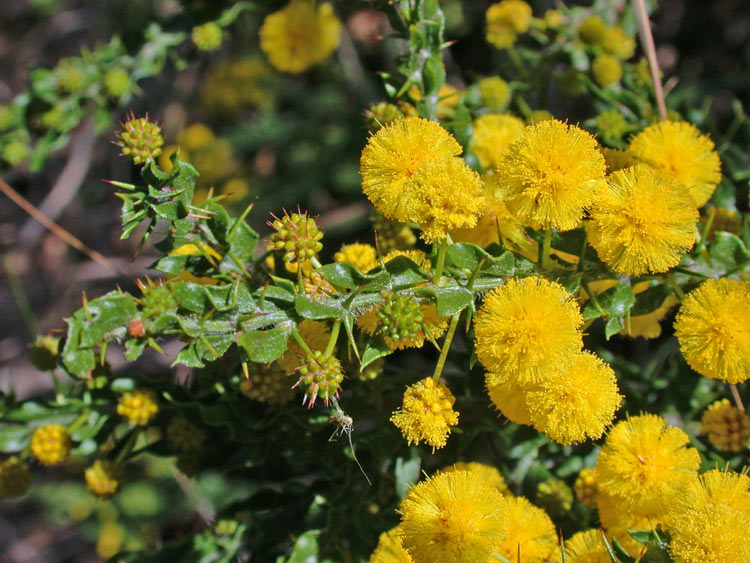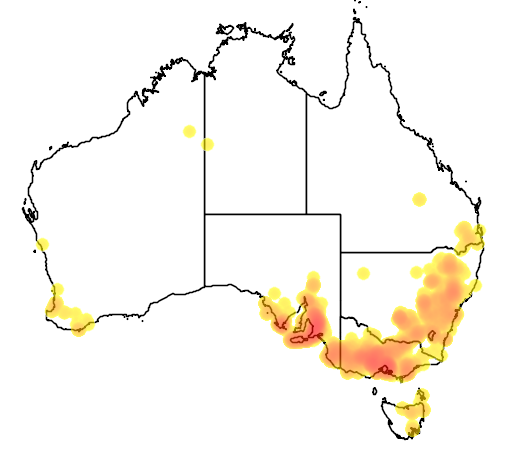Description
Common names
Kangaroo Thorn, Hedge Wattle, Prickly Acacia, Wild Irishman, Acacia Hedge, Hedge Acacia, Kangaroo Acacia, Paradoxa Wattle, Prickly Moses, Prickly Shrub Wattle, Prickly Wattle.
Scientific names
Acacia paradoxa, Acacia armata.
Family
Mimosaceae.
Genus
Acacia.
Name origin
Paradoxa, from Latin paradoxus, contrary to the usual type.
Rainfall
300mm.
Growth rate
Fast.
Growth height
2.5-4m.
Presence in Australia
Widespread in drier forests of most catchments and districts.
This specie has been identified in the following Australian states: Qld, NSW, ACT, Vic, Tas, SA, NT, WA.
Habitat
Various communities and soils.
Habit
Erect or spreading shrub 2.5-4m high. Dark green foliage, fine thorns and finely fissured brownish-grey bark.
Site preference
Dry shallow soils in higher rainfall areas or heavier soils in areas of lower rainfall. Withstands limited inundation, extended dry periods, alkaline and acidic soil. Very frost tender when young.
Characteristics
Fast-growing. Lifespan up to several decades. Prickliness precludes grazing by livestock. May spread in some districts.
Flowering
Golden-yellow, July-Nov.
Seed collection
Early Dec to mid Jan. Monitor closely as seeds released immediately or within 1-2 days of maturity.
Propagation
From scarified seed (±75 viable seeds per gram). Pour boiling or very hot water over seeds and soak for several hours before sowing.
Regeneration
From seed after disturbance such as fire. Colonises steep bare banks in shallow soils. Readily established when direct seeded.
Shade and shelter
Useful low-level cover in windbreaks in districts where known not to spread.
Land protection
Useful for controlling soil erosion due to soil-binding fibrous roots, and for improving soil fertility. Legume, improves soil fertility by "fixing" nitrogen.
Wildlife
Excellent habitat. Very useful refuge and nesting sites for small birds, such as wrens and thornbills due to prickliness. Flowers are a food source for moths, butterflies and other insects. Insect-eating birds attracted. Seeds eaten by native birds, including parrots and native pigeons.
Ornamental
Attractive specimen for hedges, barriers, screening, tubs and as cut flower, for districts where it does not spread. Prune lightly after flowering to prevent straggly growth. Resents severe pruning.
Other
Harbours rabbits in some areas, necessitating rabbit control.


